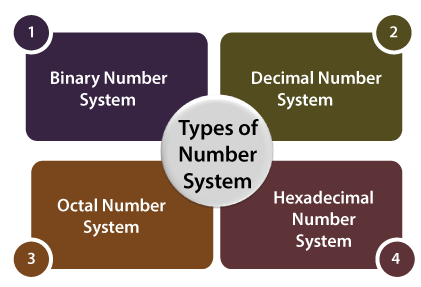
Binary Codes
Binary codes are codes which are represented in binary system with modification from the original ones. Below we will be seeing the following:
- Weighted Binary Systems
- Non Weighted Codes
Weighted Binary Systems
| Weighted binary codes are those which obey the positional weighting principles, each position of the number represents a specific weight. The binary counting sequence is an example. | . | |||||||||||||||||||||||||||||||||||||||||||||||||||||||
|
| ||||||||||||||||||||||||||||||||||||||||||||||||||||||||
| 8421 Code/BCD Code | ||||||||||||||||||||||||||||||||||||||||||||||||||||||||
The BCD (Binary Coded Decimal) is a straight assignment of the binary equivalent. It is possible to assign weights to the binary bits according to their positions. The weights in the BCD code are 8,4,2,1.
Example: The bit assignment 1001, can be seen by its weights to represent the decimal 9 because:
1x8+0x4+0x2+1x1 = 9
2421 Code
This is a weighted code, its weights are 2, 4, 2 and 1. A decimal number is represented in 4-bit form and the total four bits weight is 2 + 4 + 2 + 1 = 9. Hence the 2421 code represents the decimal numbers from 0 to 9.
5211 Code
This is a weighted code, its weights are 5, 2, 1 and 1. A decimal number is represented in 4-bit form and the total four bits weight is 5 + 2 + 1 + 1 = 9. Hence the 5211 code represents the decimal numbers from 0 to 9.
Reflective Code
A code is said to be reflective when code for 9 is complement for the code for 0, and so is for 8 and 1 codes, 7 and 2, 6 and 3, 5 and 4. Codes 2421, 5211, and excess-3 are reflective, whereas the 8421 code is not.
Sequential Codes
A code is said to be sequential when two subsequent codes, seen as numbers in binary representation, differ by one. This greatly aids mathematical manipulation of data. The 8421 and Excess-3 codes are sequential, whereas the 2421 and 5211 codes are not.
Non Weighted Codes
Non weighted codes are codes that are not positionally weighted. That is, each position within the binary number is not assigned a fixed value.
Excess-3 Code
Excess-3 is a non weighted code used to express decimal numbers. The code derives its name from the fact that each binary code is the corresponding 8421 code plus 0011(3).
| Example: 1000 of 8421 = 1011 in Excess-3 |
Gray Code
The gray code belongs to a class of codes called minimum change codes, in which only one bit in the code changes when moving from one code to the next. The Gray code is non-weighted code, as the position of bit does not contain any weight. The gray code is a reflective digital code which has the special property that any two subsequent numbers codes differ by only one bit. This is also called a unit-distance code. In digital Gray code has got a special place.
|
| |||||||||||||||||||||||||||||||||||||||||||||||||||
| Binary to Gray Conversion |
- Gray Code MSB is binary code MSB.
- Gray Code MSB-1 is the XOR of binary code MSB and MSB-1.
- MSB-2 bit of gray code is XOR of MSB-1 and MSB-2 bit of binary code.
- MSB-N bit of gray code is XOR of MSB-N-1 and MSB-N bit of binary code.
Bạn Có Đam Mê Với Vi Mạch hay Nhúng - Bạn Muốn Trau Dồi Thêm Kĩ Năng
Mong Muốn Có Thêm Cơ Hội Trong Công Việc
Và Trở Thành Một Người Có Giá Trị Hơn
Bạn Chưa Biết Phương Thức Nào Nhanh Chóng Để Đạt Được Chúng
Hãy Để Chúng Tôi Hỗ Trợ Cho Bạn. SEMICON

















